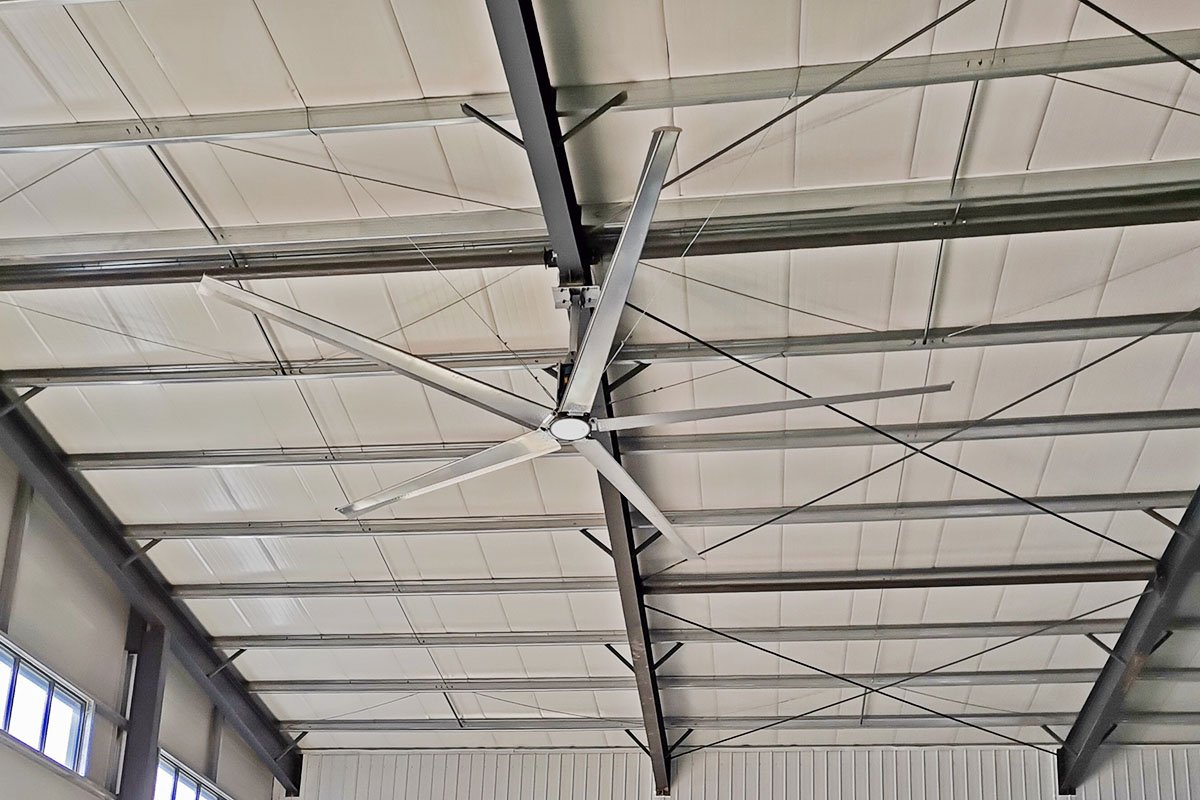
Large industrial HVLS (High Volume, Low Speed) ceiling fans are essential components in the infrastructure of many industrial and commercial settings, providing a range of benefits that enhance the functionality and comfort of these spaces. Here is a detailed analysis of the advantages and features of these large-scale fans:
1. Effective Air Circulation
Large industrial HVLS ceiling fans are designed to move significant volumes of air, ensuring comprehensive coverage across vast spaces commonly found in warehouses, manufacturing plants, and other industrial facilities. This enhanced air circulation helps to maintain a uniform temperature, reduce hot spots, and improve overall air quality.
2. Energy Efficiency
One of the primary advantages of HVLS fans is their energy efficiency. They consume less power compared to traditional high-speed fans or multiple smaller fans. By effectively circulating air with fewer revolutions per minute, these fans reduce the need for additional cooling systems, leading to significant energy savings and lower operational costs.
3. Improved Worker Comfort and Productivity
In industrial environments, worker comfort is directly linked to productivity. HVLS fans create a gentle breeze that covers large areas, providing a cooling effect that improves the working conditions for employees. A comfortable environment leads to increased productivity and reduced fatigue, enhancing the overall efficiency of the facility.
4. Durability and Longevity
These fans are built to withstand the harsh conditions typically found in industrial settings. Constructed with robust materials and designed to resist corrosion, wear, and tear, HVLS ceiling fans are made to last, reducing the need for frequent maintenance and replacement. This durability translates to long-term cost savings and reliability.
5. Safety Features
Safety is a critical consideration in industrial applications. HVLS fans are equipped with safety features such as protective guards, secure mounting systems, and designs that minimize the risk of accidents or injuries. The low-speed operation of these fans also contributes to a safer working environment.
6. Noise Reduction
Despite their large size and industrial setting, HVLS ceiling fans are engineered to operate quietly. This is particularly important in environments where noise can be a distraction or contribute to worker fatigue. The low noise levels allow for a more comfortable and productive work environment.
7. Versatility
HVLS fans can be used in a variety of industrial applications, from manufacturing floors and warehouses to vehicle repair shops and loading docks. Their adaptability makes them suitable for a wide range of environments and can be customized to fit specific space requirements.
8. Environmental Benefits
By reducing the reliance on traditional air conditioning systems, HVLS fans contribute to a reduction in greenhouse gas emissions. This makes them an environmentally friendly choice for businesses looking to reduce their carbon footprint and promote sustainability.
9. Cost-Effective Cooling Solution
HVLS fans provide a cost-effective cooling solution for large industrial spaces. They can be used as a primary cooling method in mild climates or as a complement to air conditioning in hotter regions. This dual functionality allows for significant savings on cooling costs.
10. Aesthetic Appeal
While functionality is paramount in industrial settings, the aesthetic appeal of equipment should not be overlooked. Many HVLS fans are designed with modern aesthetics in mind, complementing the industrial look while providing a clean and professional appearance.
In conclusion, large industrial HVLS ceiling fans offer a comprehensive set of benefits that make them an ideal choice for improving air circulation, worker comfort, and energy efficiency in industrial and commercial environments. Their durability, safety features, and versatility ensure that they are a reliable and long-lasting investment for any facility.
